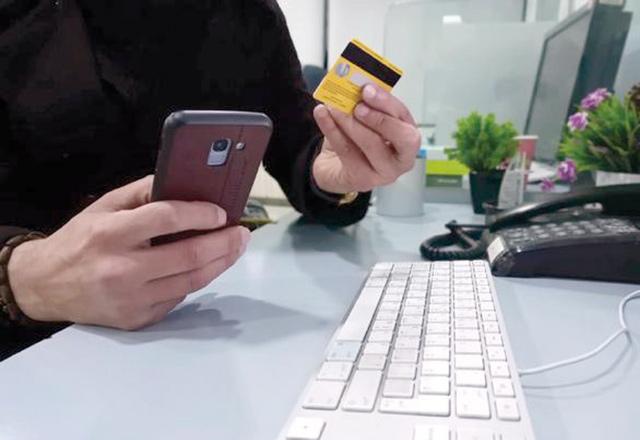- Local News
- Tue-2021-05-25 | 02:54 pm

Nayrouz News Agency :
When lockdowns were announced due to the outbreak of COVID-19 in March last year, many citizens resorted to digital payments using platforms such as eFAWATEERcom. Digital payments were reinforced by the fact that money bills were deemed to transfer the virus. As a result the Kingdom noticeably witnessed less demand on ATMs and banks.
According to Jordan Payments & Clearing Company (JoPACC), eFAWATEERcom witnessed an increase in both the number of billers and users registered on the platform. In 2020, 126 new billers joined to make up a total of 324. Also, 400,000 new users joined in the same year to make up a total of 2.5 million users on eFAWATEERcom.
"I have already been using digital payment through eFAWATEERcom for few services before the COVID outbreak, but now I use it more and have linked the platform directly to my bank account,” Ameed Sharaiha, a 3D artist, told The Jordan Times.
Batoul Al Qasem, a student, uses eFAWATEERcom to pay for her university tuition. "It made the experience of payment much more pleasant. Before, we used to go to the campus to pay,” Qasem told The Jordan Times.
"We no longer have to worry about the viruses and germs on banknotes,” she added.
Esther Abu Lail, who works at an insurance company in Amman, recalls how she used to spend a whole day every time she needed to make a payment to her university located in a different governorate from hers. "Now, I can pay instantly wherever I am and save a lot of effort,” commented Abu Lail to The Jordan Times.
"Paying online enabled me to pay while abroad,” Thomas, an engineer who works outside of the Kingdom, told The Jordan Times. "Also, I can pay 24/7,” added Thomas, who prefers to go by single name.
While digital payment has benefited users in saving a lot of time and effort, it has also benefited corporates since "the system is organised, efficient and easy to track,” according to CEO of JoPACC Maha Bahou.
With the government welcoming digital payment methods and the Central Bank allowing digital onboarding, digital payment expanded to serve different companies and organisations. The National Aid Fund, for instance, started using digital wallets to provide monthly aid to beneficiary families. Other examples include educational institutions, banks, and companies that started paying monthly allowances to their employees using digital wallets as well, Bahou said.
"Many sectors benefited from the increased demand for digital payment,” Bahou told The Jordan Times. "We worked with financial institutions to enable QR code payment as well,” Bahou noted.
Although many users find eFAWATEERcom easy and sufficient, some users faced difficulty using it. Marwa Abdeen, a student, told The Jordan Times that she had a hard time getting introduced to the platform.
"We got the huge benefit of convenience of course, but we felt it would have been clearer if there was a guide on how to manage your bills and bank account through the smart phone application,” Abdeen said.
Raya Homsi, another student, agreed with Abdeen. "Although adopting digital payment methods was a good option to decrease the chances of getting infected, I had a hard time paying my tuition because I was not clear on how to use digital payment initially,” Homsi told The Jordan Times.
When asked about suggestions to improve the service, Hamzeh Ghaith, a customer success manager in a private company, mentioned that it would be helpful if all digital services can use a single method of identification.
"If all services were connected to one’s ID number, for instance, it will be easier to pay bills using one reference number instead of having to enter a different reference number each time/for each payee,” Ghaith told The Jordan Times.
Other suggestions by users included keeping a record to easily track previous payments and reducing the commission fees to encourage more people to use the digital payment platforms.
"Raising awareness of the public is key,” Bahou said. "We distributed instructional booklets and posted videos on social media platforms to introduce citizens to digital payment. We also interacted with users to answer frequently asked questions,” Bahou noted.
"During our on-ground studies, we interact with potential users and see what triggers them to use digital payment, and how they could best get involved in the digital financial world,” Bahou added.








